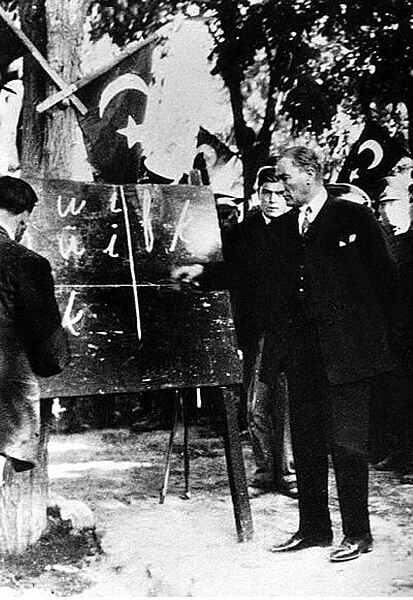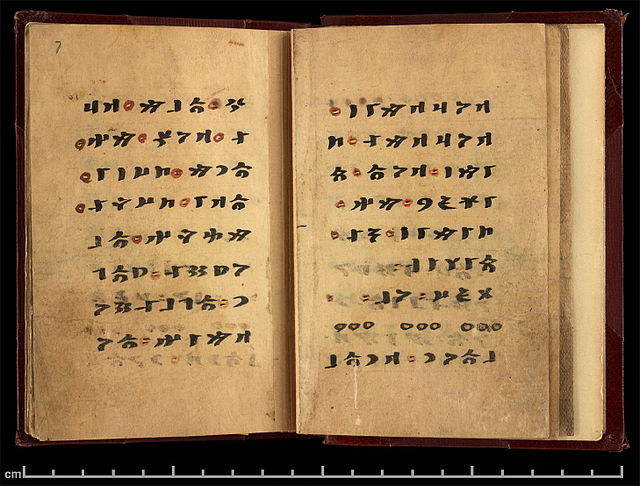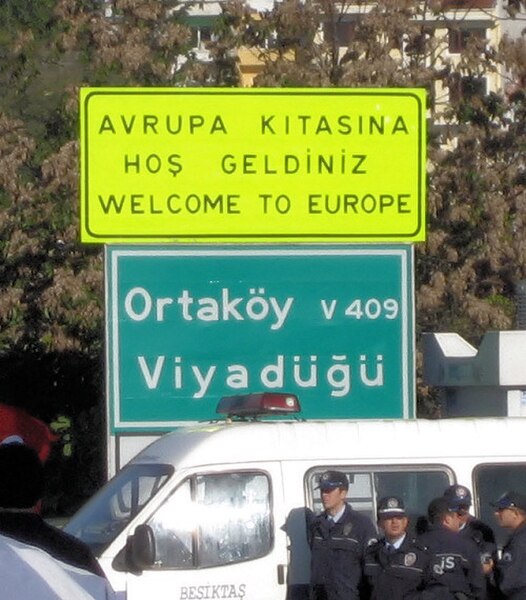The Turkish alphabet is a Latin-script alphabet used for writing the Turkish language, consisting of 29 letters, seven of which have been modified from their Latin originals for the phonetic requirements of the language. This alphabet represents modern Turkish pronunciation with a high degree of accuracy and specificity. Mandated in 1928 as part of Atatürk's Reforms, it is the current official alphabet and the latest in a series of distinct alphabets used in different eras.
Nutuk, a speech in Turkish, here printed in Arabic script.
Ottoman Turkish alphabet and 1930s modern Turkish alphabet guide, from the Republic Museum, Ankara
Atatürk introducing the new Turkish alphabet to the people of Kayseri. September 20, 1928
Turkish is the most widely spoken of the Turkic languages, with around 90 to 100 million speakers. It is the national language of Turkey and Northern Cyprus. Significant smaller groups of Turkish speakers also exist in Germany, Austria, Bulgaria, North Macedonia, Greece, Cyprus, other parts of Europe, the South Caucasus, and some parts of Central Asia, Iraq, and Syria. Turkish is the 18th most spoken language in the world.
The 9th-century Irk Bitig or "Book of Divination"
The 15th century Book of Dede Korkut
An advertisement by the IKEA branch in Berlin written in the German and Turkish languages.
Road sign at the European end of the Bosphorus Bridge in Istanbul. (Photo taken during the 28th Istanbul Marathon in 2006)







